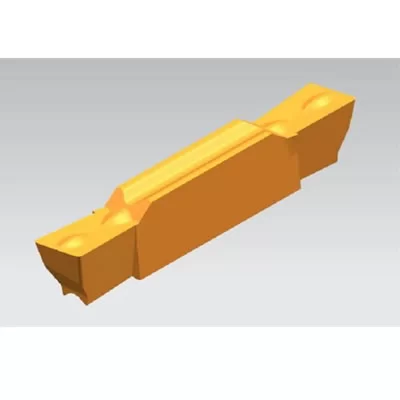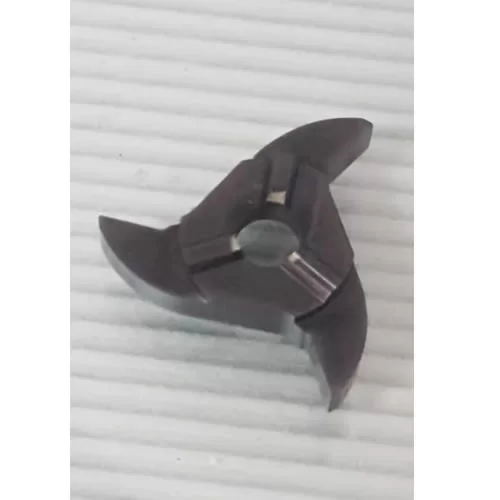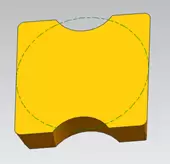Development And Technical Trend Of Ceramic Inserts Materials
Development and technical trend of ceramic blade materials
In machining, the tool has always been called "industrially made teeth", and the cutting performance of the tool material is one of the key factors determining its production efficiency, production cost and processing quality. Therefore, the correct choice of cutting tool material is Importantly, ceramic knives, with their excellent heat resistance, wear resistance and chemical stability, show the advantages that traditional tools can't match in the field of high-speed cutting and cutting difficult-to-machine materials, and the main raw materials of ceramic knives are Al and Si. The rich content in the earth's crust can be said to be inexhaustible and inexhaustible. Therefore, the application prospect of new ceramic tools is very broad.
First, the type of ceramic tools
The progress of ceramic tool materials is focused on improving the performance of traditional tool ceramic materials, refining grains, component compounding, coating, improving sintering process and developing new products, in order to obtain high temperature resistance, wear resistance and resistance. Excellent chipping performance and can meet the needs of high-speed precision machining. Henan Institute of Superhard Materials can roughly divide ceramic tool materials into three categories: alumina, silicon nitride and boron nitride (cubic boron nitride tools). In the field of metal cutting, alumina ceramic blades and silicon nitride ceramic blades are collectively referred to as ceramic blades; in inorganic non-metal materials, cubic boron nitride materials belong to a large class of ceramic materials. The following are the characteristics of the three types of ceramics.
(1) Alumina (Al2O3)-based ceramic: Ni, Co, W, or the like is added as a binder metal to the carbide-based ceramic, and the bonding strength between the alumina and the carbide can be improved. It has good wear resistance and heat resistance, and its high temperature chemical stability is not easy to interdif or chemical reaction with iron. Therefore, alumina-based ceramic cutters have the widest application range, suitable for steel and cast iron. High-speed machining of its alloys; due to the improved thermal shock resistance, it can also be used for milling or planing under interrupted cutting conditions, but it is not suitable for processing aluminum alloys, titanium alloys and niobium alloys, otherwise it is prone to chemical wear.
(2) Silicon nitride (Si3N4)-based ceramic cutter: It is a ceramic made by adding a suitable amount of metal carbide and a metal strengthening agent to a silicon nitride matrix, and using a composite strengthening effect (also referred to as a dispersion strengthening effect). It is characterized by high hardness, good wear resistance, good heat resistance and oxidation resistance, and the chemical reaction between silicon nitride and carbon and metal elements is small, and the friction factor is also low. Suitable for finishing, semi-finishing, finishing or semi-finishing.
(3) Boron nitride ceramic (cubic boron nitride cutter): high hardness, wear resistance, good heat resistance, good thermal stability, good thermal conductivity, low friction coefficient, and small coefficient of linear expansion. For example, Hualing cubic boron nitride tool BN-S20 grade is used for roughing hardened steel, BN-H10 grade is used for high speed finishing hardened steel, BN-K1 grade is processed high hardness cast iron, BN-S30 grade high speed cutting ash Cast iron is more economical than ceramic inserts.
Second, the characteristics of ceramic tools
The characteristics of ceramic tools: (1) good wear resistance; (2) high temperature resistance, good red hardness; (3) tool durability is several times or even several times higher than traditional tools, reducing the number of tool changes during processing, ensuring Small taper and high precision of the workpiece to be machined; (4) not only can be used for roughing and finishing of high-hardness materials, but also for machining with large impact such as milling, planing, interrupted cutting and blank roughing; (5) When the ceramic blade is cut, the friction with the metal is small, the cutting is not easy to be bonded to the blade, the built-up edge is not easy to occur, and high-speed cutting can be performed.
Compared with cemented carbide inserts, ceramic inserts can withstand high temperatures of 2000 ° C, while hard alloys become soft at 800 ° C; so ceramic tools have higher temperature chemical stability and can be cut at high speed, but the disadvantage is ceramic inserts. Strength and toughness are low and easy to break. Later, boron nitride ceramics (hereinafter referred to as cubic boron nitride tools) were introduced, which are mainly used for turning, milling, and boring superhard materials. The hardness of cubic boron nitride cutters is much higher than that of ceramic inserts. Because of its high hardness, it is also called superhard material with diamond. It is commonly used to process materials with hardness higher than HRC48. It has excellent high temperature hardness - up to 2000 ° C, although It is more brittle than cemented carbide blades, but has significantly improved impact strength and crush resistance compared to alumina ceramic tools. In addition, some special cubic boron nitride tools (such as Huachao Super Hard BN-K1 and BN-S20) can withstand the chip load of rough machining and can withstand the impact of intermittent machining and finishing. The wear and cutting heat, these characteristics can meet the difficult processing of hardened steel and high hardness cast iron with cubic boron nitride tools.

















